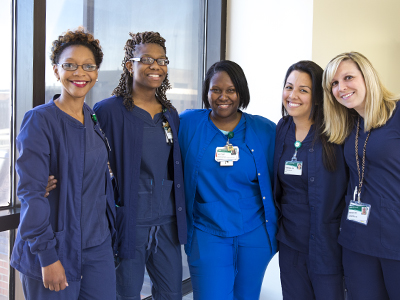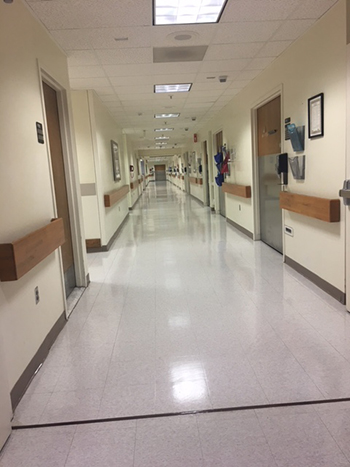The UAB Outpatient Clinical Decision Unit (OCDU) expanded in early September, relocating to P7 in the West Pavilion and greatly increasing its capacity to 51 observation and treatment spaces. Formally created in July 2015 to help ease demand for inpatient beds, the unit delivers nursing-driven care for non-emergency patients who need more attention than an outpatient visit provides but less than a full hospital admission.

The unit has helped reduce overall length of stay by 50 percent for the two dozen diagnosis-related group (DRG) codes it currently manages, all of which have clearly established care protocols. As just one example, patients being treated for cellulitis – a bacterial skin infection – on average spend 2.5 days in the OCDU compared with four days as hospital inpatients. Other conditions commonly treated by the OCDU include asthma, sickle cell anemia, chest pain, atrial fibrillation, abdominal pain, and chronic obstructive pulmonary disease (COPD). The average length of stay in the OCDU is approximately 30 hours.
“Most service lines have low-acuity patients who could be served in a better manner than through an inpatient admission,” says Jarred Thomas, MD, who oversees the OCDU as director of both Emergency Services and Observation Medicine.
The unit is staffed by one full-time physician, with one more coming in, and two nurse practitioners. Approximately 30 nurses and PCTs are assigned to the unit, and that number is expected to reach 100 once the expanded OCDU is fully staffed.
Capturing Patients

The OCDU was born from extensive data showing that a dedicated unit combining the best of inpatient and outpatient services could reduce length of stay and ease demand for emergency resources while improving patient care. A recent analysis showed that an average of 37 inpatients per day could be better served by OCDU, and the unit is trying to capture as many of them as possible. Unit leadership is developing relationships with the various UAB Medicine service lines to foster awareness and grow patient referrals, while a newly implemented IMPACT PowerPlan is helping identify patients who might be ideal candidates for the OCDU.
“Initially everybody came to the unit from the Emergency Department,” Dr. Thomas says. “If we thought they were a good candidate for our unit, our team would bring them up. When we saw that we could get people through the system faster and avoid burdening another service, we began expanding to more observations and diagnoses.”
The OCDU recently worked with the UAB Comprehensive Stroke Center to create a PowerPlan for transient ischemic attack (TIA, sometimes called a “mini-stroke”).
“These patients need evaluation, but they aren’t at the same risk level as patients with acute deficits,” Dr. Thomas says. “They can easily be managed by protocol with oversight from the Stroke Team and coordination for follow-up care once their diagnostics are completed. This clears up the Stroke Team to take care of acute cases across the region and save lives. The same thing with closed head injuries and Neurosurgery; we take patients who don’t require intervention but just need to be monitored for 24 hours to make sure everything remains stable. That frees up resources in the Trauma Service and in the ICU for patients who need them much more urgently.”
A Better Care Model
Nurse Manager Kristen Noles, RN, MSN, says the OCDU also partnered with the GI surgery and endoscopy services to care for some of their post-procedure patients who need short-term monitoring, and the staff is reaching out to other service lines throughout the hospital. She says her unit is changing the mindset of how UAB Medicine moves patients through the system.
“If a patient has cancer and is vomiting, they don’t have to go to a cancer floor or wait in the ED until a cancer bed opens up,” Noles says. “Come to us and let us give you compassionate care, consult with your medical oncologist, decide whether you need to be admitted as an inpatient, and – if not – we get you out with appropriate follow-ups in a much shorter timeframe. We’re opening our doors to provide better, more efficient care for patients as they present. It’s really an exciting care model because it’s truly the best thing for the patient and for the system.”
